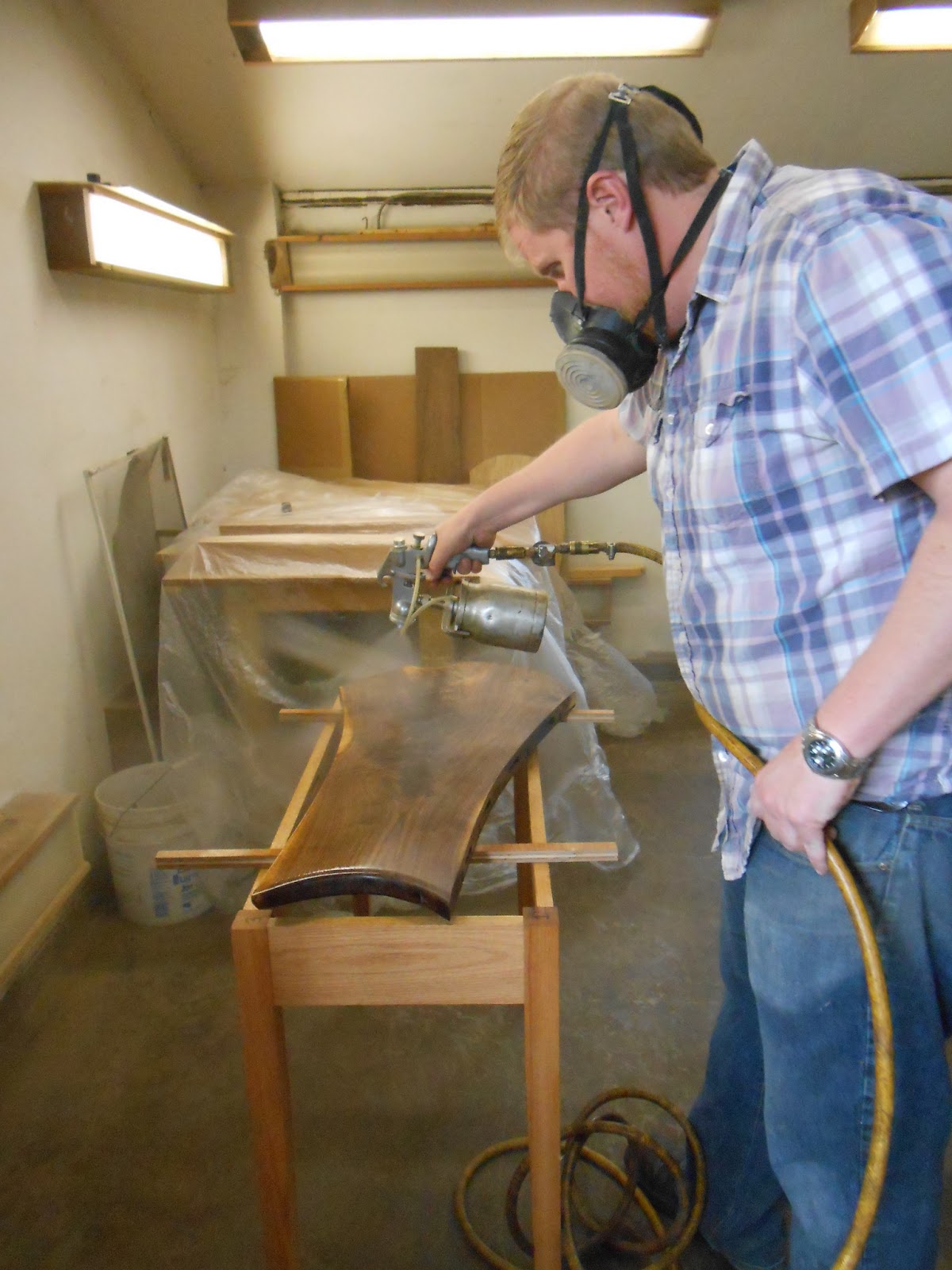It all began when Rob found some powder piles amongst the oak boards we have in the stacks in the shop. He found a tiny dead bug and sent me on a fact-finding mission to confirm the type of wood-boring insect we were dealing with. Essentially, the powderpost beetle larvae feed on wood (primarily sapwood) and reduce it to a fine powder, hence their appropriate name. The biggest issue with this is that if we have live beetles in the stacks, they'll spread and damage the hundreds of boards that reside here. Needless to say, the beetles needed to go.
First, all boards that had any beetle holes or powder cones and piles needed to be removed, so we pulled out all the boards in that section of the stack and sorted them. The powder covered or eaten boards were taken outside and the rest were stacked outside the racks.
We located the highest shelf that showed reminisce of beetle feasting and pulled all the boards on that shelf and those below it. As you can see, there were more than a few boards that needed to be pulled.
The next part of this adventure required me to conquer a long-standing fear of spiders. Once the boards were out, my services were required to crawl into the stacks and vacuum anywhere and everywhere around the effected racks.
As I remained very aware of every spider web and every shadowed crevasse that had gathered over the years, the shop vac and I took to the inner depths of the lumber racks. I was careful to vacuum each beam as well as the boards along the sides of the emptied rack.
 Now, what to do with the eaten and potentially infested boards? Well, they need to be de-infested so we can see what is left of useable wood. So, we brought the boards down to the kiln. As we stacked the boards on the cart, they were sprayed with insecticide. Using Timbor, we used the spray mixture to hit all the edges and faces of each board before stacking on the next layer of boards.
Now, what to do with the eaten and potentially infested boards? Well, they need to be de-infested so we can see what is left of useable wood. So, we brought the boards down to the kiln. As we stacked the boards on the cart, they were sprayed with insecticide. Using Timbor, we used the spray mixture to hit all the edges and faces of each board before stacking on the next layer of boards.When all the boards were sprayed, we covered them in plastic for the night to make sure the solution was absorbed as much as possible. The following morning, we removed the plastic and replaced it with a black carpet and slid the cart into the kiln. At a toasty 145 degrees (as of yesterday), the kiln will house the boards for a few days to ensure that any and all larvae and adult beetles are exterminated before we bring the boards back into the shop.
According to my research, powderpost beetles lay their eggs in or on sapwood and they eat their way through the wood as they grow and develop. The larvae look like the little guy above. The holes we see in the wood's surface "are exit holes where adult beetles have chewed out of the wood after completing their development," says the University of Kentucky. The adults emerge from the wood 1-5 years after their eggs have been laid, usually during April - July. Perfect timing, guys, you seem to be right on time. You can see what the adults and their emergence holes look like above, as well. As I said, they prefer to dine on sapwood and they can infest wood for generations as they continue to lay eggs and leach away all the nutrients and strength from the wood. It's incredible the amount of damage these tiny little insects can do.
As the boards cook in the kiln, we are hopeful that our strategies have won us the battle. Have you ever come across powderpost beetles in your home, furniture, or lumber? Did you have a different approach to eliminate the harmful bugs? We'd love to hear from readers about your experiences since it's an issue, as woodworkers/wood lovers, we're all bound to all share!


































